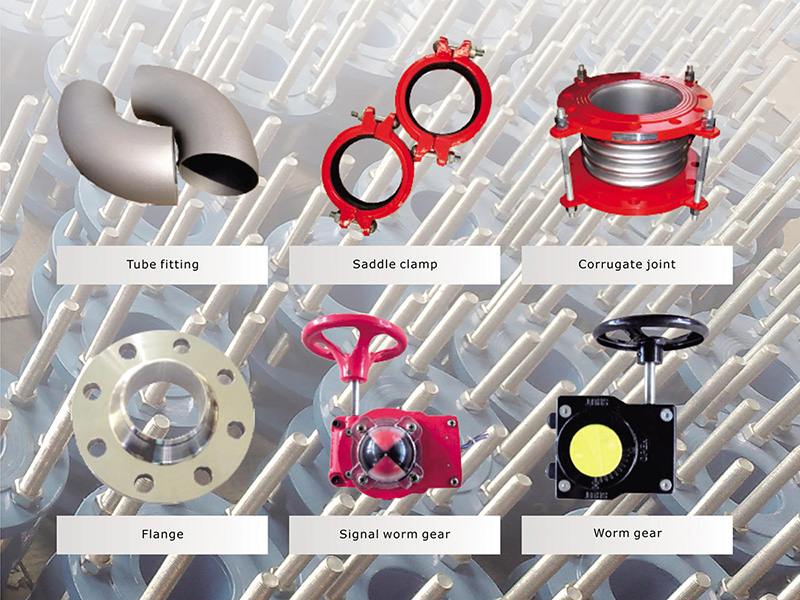okt . 19, 2024 04:13 Back to list
dual plate check valve wafer type
Understanding Dual Plate Check Valve - Wafer Type
In the world of industrial fluid control, valves play a crucial role in ensuring the smooth operation of various systems. One type of valve that has gained popularity due to its efficiency and reliability is the dual plate check valve, specifically the wafer type. This article explores the functionality, advantages, and applications of the dual plate check valve wafer type.
What is a Dual Plate Check Valve?
A dual plate check valve, also known as a dual disc check valve, is a mechanical valve that allows fluid to flow in one direction while preventing backflow. This functionality is essential in many systems to maintain pressure and avoid damage to equipment. Unlike traditional check valves that use a single disc to block reverse flow, dual plate check valves employ two discs or plates that pivot on a common axis. This design minimizes the overall size and weight of the valve while enhancing its performance.
Wafer Type Design
The wafer type dual plate check valve is specifically designed to fit between two flanges in a piping system. Its compact form allows it to be easily installed with minimal space requirements, making it ideal for situations where space is limited. The wafer design typically incorporates a set of gaskets or seals that provide a leak-proof connection between the valve and the pipeline.
Working Principle
The operation of a dual plate check valve is relatively straightforward. When fluid flows in the designated direction, the pressure pushes the dual plates away from each other, allowing maximum flow. If there is any attempt for backflow, the weight of the plates and the back pressure from the fluid cause the plates to close against their seats, effectively stopping the flow. This simple yet effective mechanism ensures reliable operation under various conditions.
Advantages of Dual Plate Check Valve – Wafer Type
dual plate check valve wafer type

1. Space Efficiency The wafer type design is particularly advantageous in applications with limited space. It can be easily integrated into existing systems without the need for extensive modifications.
2. Lightweight Construction Dual plate check valves are lighter than their traditional counterparts, making them easier to handle and install. This characteristic also reduces the load on the supporting structures of the piping system.
3. Minimal Pressure Loss Due to their design, dual plate check valves create less turbulence and pressure drop, which is critical in maintaining system efficiency.
4. Versatility The wafer type can be used in various applications, including water supply systems, hydronic heating, cooling systems, and wastewater treatment. They are effective in both industrial and municipal environments.
5. Maintenance These valves require relatively low maintenance due to their robust design and materials. Regular inspections can ensure long service life and optimal performance.
Applications
Dual plate check valves are widely utilized across various industries. In the water and wastewater industry, they prevent backflow, protecting pumps and other equipment from potential damage. In the energy sector, they help maintain the integrity of pipelines that transport oil and gas. These valves are also used in heating, ventilation, and air conditioning (HVAC) systems to control fluid movement efficiently.
Conclusion
The dual plate check valve, specifically the wafer type, is an invaluable component in modern fluid control systems. Its efficient design, lightweight construction, and reliable performance make it a preferred choice for various applications. Whether in industrial settings or municipal water systems, these valves play a vital role in ensuring that fluids flow safely and without interruption. As industries continue to seek more efficient and sustainable solutions, the importance of effective components like the dual plate check valve will only grow. Understanding their operation and benefits can help in making informed decisions in fluid management systems.
Share
-
Reliable Wafer Type Butterfly Valves for Every IndustryNewsJul.25,2025
-
Reliable Flow Control Begins with the Right Ball Check ValveNewsJul.25,2025
-
Precision Flow Control Starts with Quality ValvesNewsJul.25,2025
-
Industrial Flow Control ReliabilityNewsJul.25,2025
-
Engineered for Efficiency Gate Valves That Power Industrial PerformanceNewsJul.25,2025
-
Empowering Infrastructure Through Quality ManufacturingNewsJul.25,2025